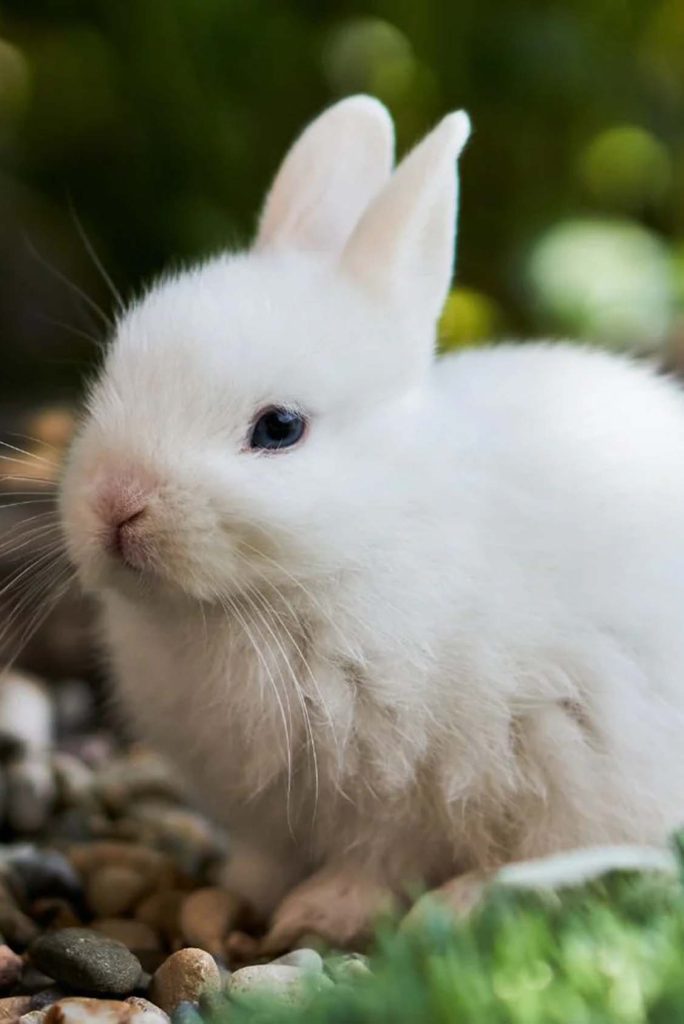Rabbits make wonderful pets with their playful personalities, gentle nature, and expressive behaviors. However, they also require specific care to ensure they live a happy and healthy life. This comprehensive guide will walk you through everything you need to know about caring for your pet rabbit, from setting up their environment to their diet, health care, and more. Whether you’re a new rabbit owner or looking to enhance your knowledge, this guide will provide you with practical tips and tricks to keep your bunny thriving.
1. Understanding Your Rabbit’s Needs
Before bringing a rabbit into your home, it’s essential to understand their basic needs and characteristics:
- Social Animals: Rabbits are highly social creatures that thrive on interaction with their owners and, ideally, with other rabbits. They need daily mental stimulation and physical exercise.
- Size and Breed: Rabbits come in various breeds and sizes. While all rabbits have similar care needs, larger breeds may require more space and food.
- Lifespan: Domestic rabbits can live 10 to 12 years, sometimes even longer with proper care.
2. Setting Up the Perfect Habitat
Creating a comfortable and safe living environment is crucial for your rabbit’s well-being. Here’s how to set up their habitat:
a. Housing
- Cage vs. Free Roaming: While cages can provide a safe space for your rabbit, it’s best to allow them to roam freely in a rabbit-proofed area of your home. A large, multi-level cage can serve as a base, but rabbits need space to exercise and explore.
- Size: The minimum size for a rabbit’s living area should be at least 4×4 feet for small to medium breeds, and larger for bigger breeds. The space should be large enough for your rabbit to hop around comfortably.
- Bedding: Use soft, absorbent bedding like hay or paper-based bedding. Avoid cedar or pine shavings as they can cause respiratory problems. Ensure the bedding is kept clean to prevent odors and bacteria.
b. Litter Training
- Litter Box: Rabbits can be litter trained, and it’s advisable to use a litter box to keep their living area clean. Place the litter box in a corner of their habitat where they frequently urinate. Use rabbit-safe litter, such as paper pellets or hay-based litter.
- Training Tips: Place a small amount of their waste in the litter box to encourage them to use it. Consistency and patience are key. Most rabbits learn quickly if given a clear and consistent routine.
3. Nutrition and Diet
Proper nutrition is fundamental to your rabbit’s health. Here’s what you need to know:
a. Hay
- Importance: Hay should make up the majority of your rabbit’s diet. It provides essential fiber for digestion and helps prevent obesity and dental issues.
- Types: Offer a variety of hays, including timothy, orchard, and meadow hay. Make sure the hay is fresh and free of mold.
b. Fresh Vegetables
- Variety: Provide a selection of fresh vegetables daily, such as leafy greens (romaine lettuce, kale, parsley), carrots, and bell peppers. Introduce new vegetables gradually to monitor for any digestive issues.
- Avoid: Certain vegetables, like iceberg lettuce, are low in nutrients and should be avoided. Also, avoid starchy vegetables and those high in oxalates, such as spinach.

c. Pellets
- Type: Choose high-fiber, rabbit-specific pellets with minimal additives. Avoid those with seeds, dried fruits, or nuts.
- Amount: Pellets should be given in moderation, typically about 1/4 cup per 5 pounds of body weight per day.
d. Fresh Water
- Hydration: Ensure your rabbit has access to fresh, clean water at all times. Use a water bottle or a heavy bowl that can’t be easily tipped over.
4. Grooming and Hygiene
Regular grooming keeps your rabbit healthy and comfortable. Here’s how to care for their fur and nails:
a. Brushing
- Frequency: Brush your rabbit regularly to prevent matting and reduce shedding, especially in long-haired breeds. Short-haired rabbits need less frequent brushing.
- Tools: Use a soft-bristled brush or grooming glove to remove loose fur and dirt.
b. Nail Trimming
- How Often: Trim your rabbit’s nails every 4-6 weeks to prevent overgrowth and avoid injury.
- Technique: Use a small animal nail clipper or scissor-type nail trimmer. Be careful not to cut into the quick (the pink area inside the nail) as it can cause bleeding.
c. Cleaning
- Living Area: Clean your rabbit’s living space regularly, at least once a week. Remove soiled bedding, clean the litter box, and wipe down surfaces.
- Bathing: Rabbits do not need baths. Overbathing can lead to skin problems. If your rabbit gets dirty, spot clean with a damp cloth.
5. Health Care
Regular health care is essential for keeping your rabbit in top shape. Here’s what to keep in mind:

a. Veterinary Care
- Routine Checkups: Schedule annual veterinary checkups for your rabbit. Find a vet experienced with rabbits to ensure they receive the best care.
- Vaccinations: Depending on your location, your rabbit may need vaccinations for diseases like myxomatosis and rabbit hemorrhagic disease (RHD).
b. Spaying/Neutering
- Benefits: Spaying or neutering helps prevent certain health issues and unwanted behaviors. It also reduces the risk of reproductive cancers.
- Timing: Consult with your vet about the best time to spay or neuter your rabbit.
c. Common Health Issues
- Dental Problems: Rabbits are prone to dental issues due to their continuously growing teeth. Ensure they have plenty of hay to help wear down their teeth.
- Gastrointestinal Issues: Monitor your rabbit for signs of digestive problems, such as changes in eating habits or stool consistency. Ensure they have a high-fiber diet to prevent issues like gastrointestinal stasis.
- Respiratory Issues: Watch for signs of respiratory infections, such as sneezing or discharge. Ensure their living area is well-ventilated and free of dust.
6. Socialization and Enrichment
Rabbits are social animals that need mental stimulation and interaction:
a. Bonding Time
- Interaction: Spend time with your rabbit daily to build a strong bond. Gentle petting, talking, and playing will help them feel secure and loved.
- Playtime: Provide toys and activities that encourage natural behaviors, such as chewing and digging. Safe toys include cardboard boxes, tunnels, and wooden chew toys.
b. Social Interaction
- Companionship: If possible, consider adopting a second rabbit to keep your bunny company. Introduce new rabbits slowly and carefully to ensure they get along.
- Playdates: Supervised playdates with other rabbits can provide social enrichment and prevent loneliness.
7. Training and Behavior
Understanding and addressing your rabbit’s behavior can enhance their quality of life:
a. Behavior Insights
- Chewing: Rabbits chew to keep their teeth healthy and manage boredom. Provide chew toys and safe items to chew on.
- Digging: Digging is a natural behavior for rabbits. Offer a designated digging area or box filled with shredded paper or hay.
b. Training Tips
- Positive Reinforcement: Use treats and praise to encourage good behavior and discourage undesirable behaviors. Never use punishment, as rabbits are sensitive and may become frightened.
- Litter Training: Be patient and consistent with litter training. Reward your rabbit for using the litter box correctly.
8. Safety and Precautions
Keeping your rabbit safe is crucial for their well-being:
a. Rabbit-Proofing
- Hazards: Remove or protect electrical cords, small objects, and toxic plants from your rabbit’s environment. Ensure they cannot access areas that may be unsafe.
- Enclosures: If you use a playpen or enclosure, make sure it’s secure and free of gaps where your rabbit could escape.
b. Emergency Preparedness
- First Aid Kit: Keep a rabbit-specific first aid kit on hand, including items like bandages, antiseptic, and emergency contact numbers for your vet.
- Signs of Illness: Be aware of signs of illness, such as changes in appetite, lethargy, or abnormal droppings. Seek veterinary care promptly if you notice any concerning symptoms.
9. Seasonal Care
Adjust your rabbit’s care routine based on seasonal changes:
a. Winter
- Temperature: Ensure your rabbit’s living area is warm and draft-free. Provide extra bedding for insulation.
- Exercise: Keep your rabbit active with indoor play and enrichment, especially if outdoor exercise is limited due to cold weather.
b. Summer
- Heat: Rabbits are sensitive to heat. Provide plenty of fresh water and a cool, shaded area. Avoid direct sunlight and hot temperatures.
- Cooling: Use cooling pads or offer frozen water bottles for your rabbit to lie next to. Ensure proper ventilation in their living space.
10. Traveling with Your Rabbit
If you need to travel with your rabbit, consider the following tips:
a. Transport
- Carrier: Use a secure and comfortable carrier for transportation. Line it with bedding and provide a water bottle.
- Safety: Keep your rabbit’s carrier in a stable position during travel to avoid sudden movements that could cause stress.
**b.
Staying Away**
- Preparation: If you’ll be away for an extended period, arrange for a trusted friend, family member, or pet sitter to care for your rabbit.
- Instructions: Provide clear instructions on your rabbit’s care routine, including feeding, cleaning, and any special needs.
Caring for a pet rabbit involves a combination of understanding their unique needs, providing proper nutrition and housing, and ensuring they receive plenty of love and attention. By following the tips and guidelines in this ultimate care guide, you can help your rabbit lead a happy, healthy, and fulfilling life.
From setting up their habitat to managing their diet, health, and enrichment, each aspect of rabbit care plays a crucial role in their overall well-being.
